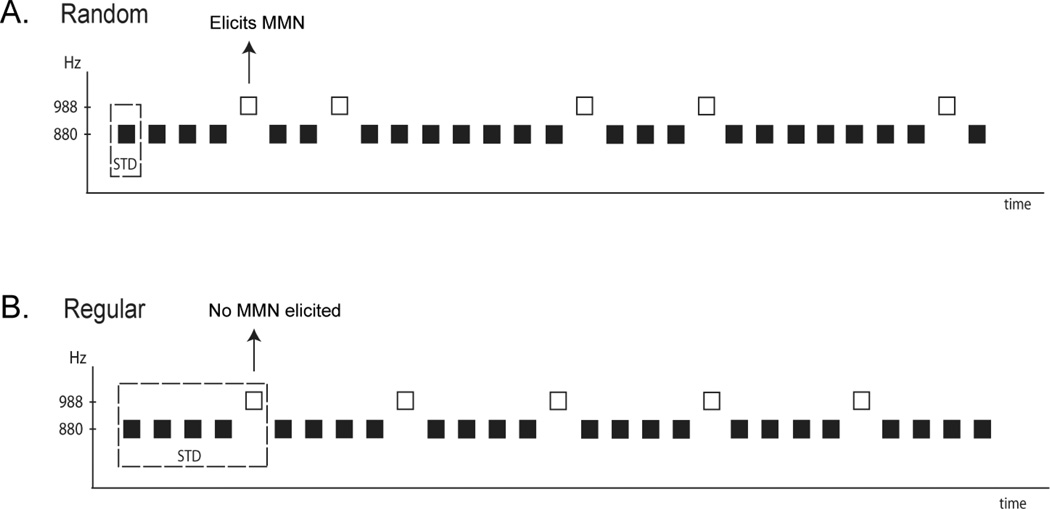Figure 1. MMN is highly context-based.
An auditory oddball paradigm is displayed with random (A) and regular (B) presentation of the two tones. MMN is elicited by the 988 Hz tones in the Random presentation (A), whereas the same 988 Hz tone does not elicit MMN when presented every fifth tone, in a Regular presentation (B). The same ratio of 988/880 Hz tones are presented in both sequences. MMN elicitation is therefore dependent upon detecting the repeating regularity in passive conditions or on using the pattern to perform a task in active listening conditions. When the 988 Hz tone (the ‘probe’ tone) is detected as part of a five-tone repeating pattern, either by stimulus-driven or task-based factors, no MMN is elicited by the infrequently occurring (20%) tone (see text for further details).

